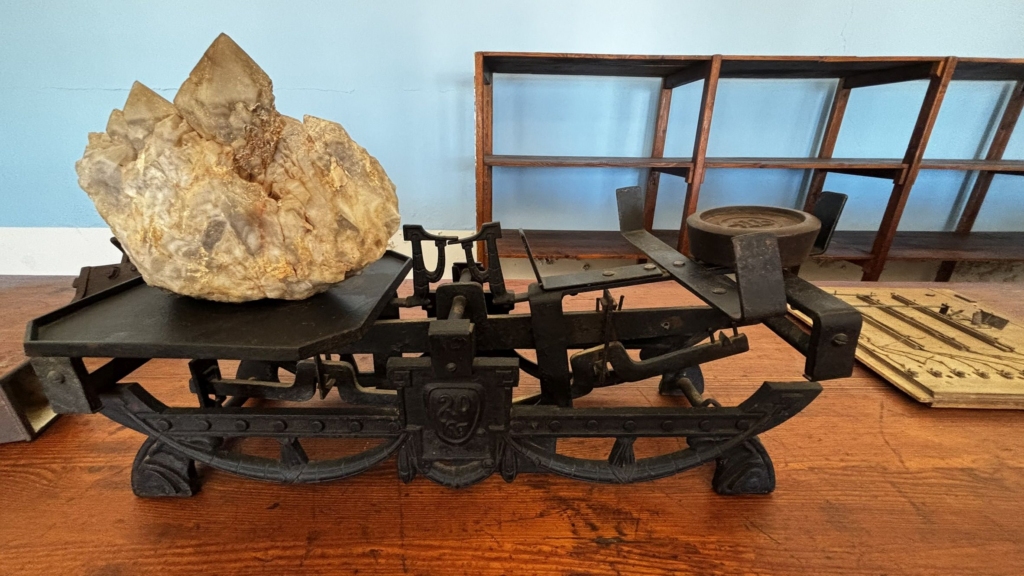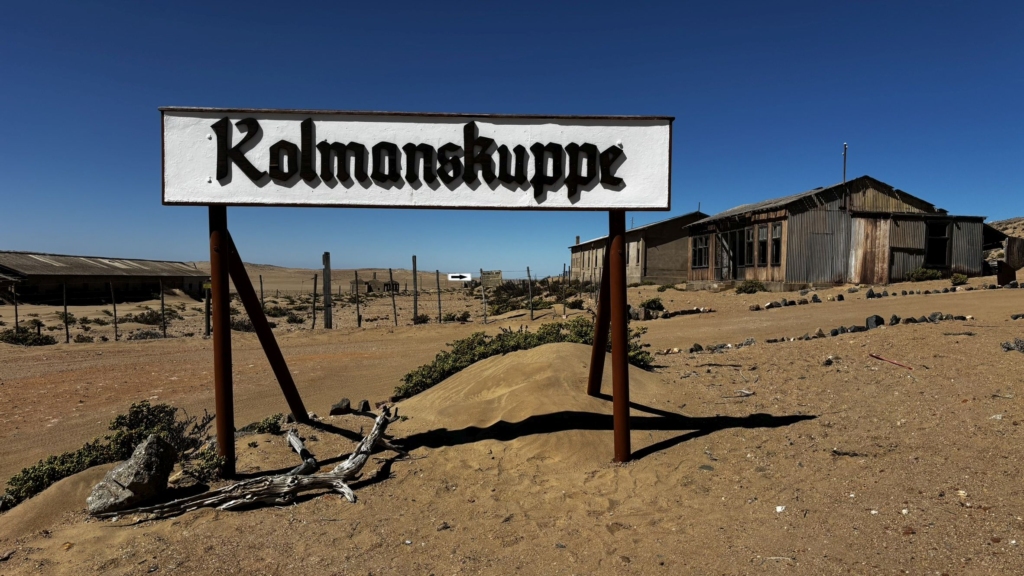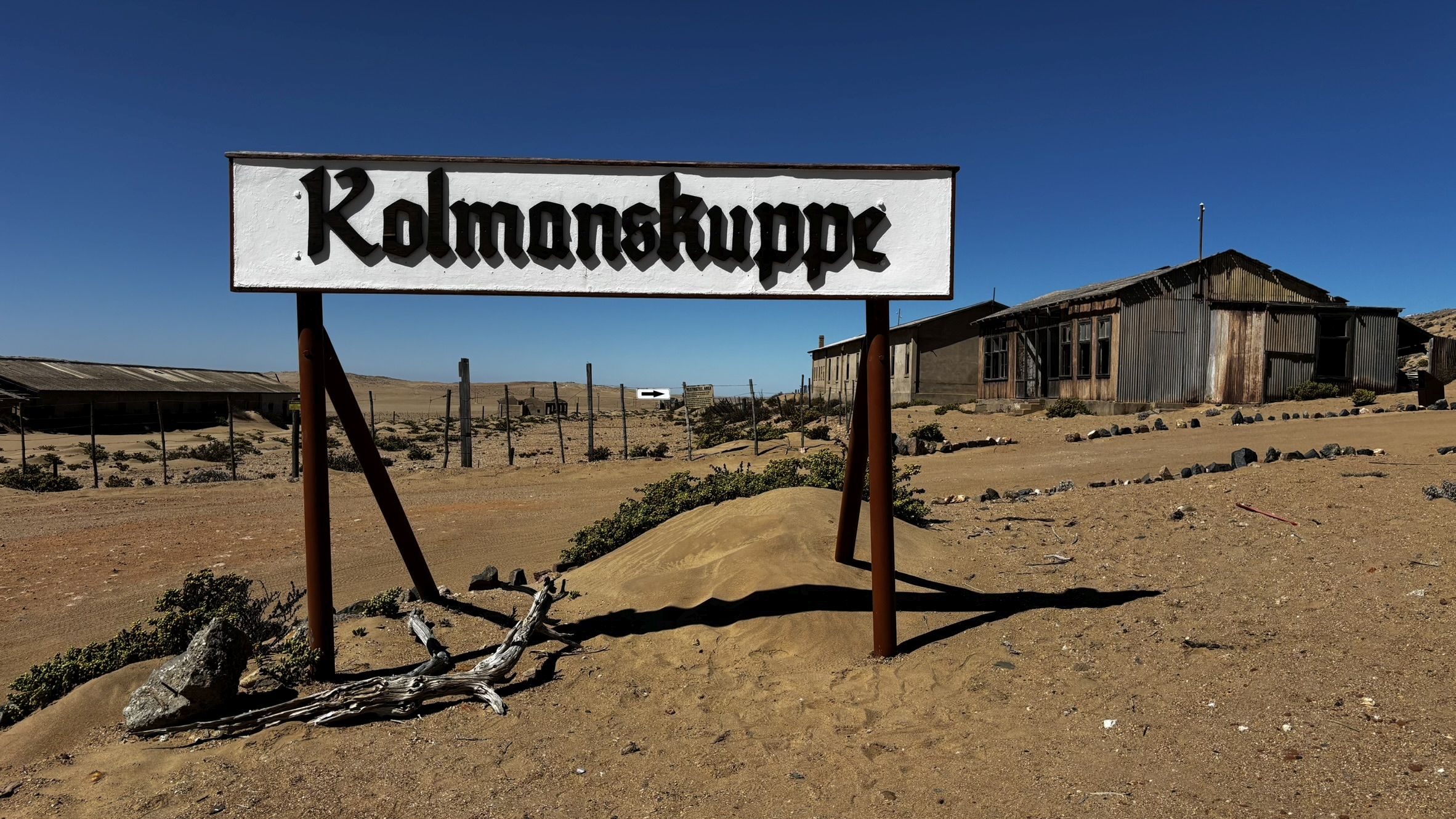Namibia ranks sixth in the world ranking of diamond mining. Namibia mins 2.1 million carats per year, which is only 7.7% of the annual diamond production of Namibia’s neighbor Botswana. Unable to compete with the power of Botswana, Namibia focuses on the extraction of high-purity diamonds. Such diamonds are mined in Namibia, among other things, from the seabed along the Atlantic coast.
The sandy Atlantic coast was once dotted with “sparkling stones”, as diamonds were called by the local population. Many places are still exploited, but many have been abandoned. One of such places is Kolmanskuppe, known as the “Ghost Town” near the town of Luderitz. A “must see” on the list of visitors to Namibia, a source of charming photos of abandoned buildings half-buried in sand.
Kolmanskuppe was founded in 1908 when a local railway worker, Zacharias Lewala, found a diamond while working in the area. He showed the diamond to his superior, August Stauch, and thus started the diamond rush at Luderitz. Soon the German colonists built the town. As the locals say, if the Germans start building a city, they will start with a bowling alley. And a moment later, a casino, a school, a hospital, a ballroom and many luxurious houses were built. Everything in the town was paid for with diamonds, and even local prostitutes accepted payment in diamonds. The town began to lose its importance in 1928, when richer diamond deposits were discovered in Oranjemund. Finally, Kolmanskuppe was abandoned in 1956, when intensive mining deprived the local deposits. Since then, sand has been encroaching on houses and the desert has returned to its place.
Today, the abandoned and sand-covered town was so luxurious that every day each family received its share of beer, water and ice, which were stored in refrigerators. Shopping was transported by train, and ladies who wanted to go shopping were transported by wagons. The town also had an X-ray machine, one of the first in Namibia, which was used to cut out attempts to steal diamonds by mine workers or security guards.
And the employees did not lack imagination. Where there is a temptation to become unimaginably rich, creativity appears. In the local museum, there is an entire room dedicated to the thwarted ways of stealing diamonds. Below I write down a few memorized so that you know how not to steal diamonds
- Classically, i.e. in different parts of the body. Each orifice of the body was suitable for smuggling diamonds. Attempts were made to carry diamonds in the mouth, nose, ears, teeth, hair, groin, rectum, stomach. Hence the usefulness of the X-ray machine, although it is difficult to imagine what dose of X-rays the workers received when they were x-rayed every time they left the mine…
- Also classic, i.e. in clothes – cuffs, seams, belts, shoes. In the museum you will find exhibits of shoes in which the owners hid diamonds – in the heel, but also in the toe of the shoe. There were quite a few large diamonds here. And again, the X-ray machine turned out to be an invaluable help.
- Birds were tried to be used quite commonly for pigeons. A diamond was attached to the bird’s legs with an inconspicuous tape or diamonds were placed in specially sewn harnesses that allowed the birds to fly. The problem of the “pigeon” method was the burden of additional weight on the birds, the birds flew low and could be easily tracked by the guards, which additionally brought the benefit of catching both the thief and the receiving bird. Both the recipient and the sender were punished, the bird escaped with its life😊 To this day, in all diamond mines, it is forbidden to possess or catch pigeons, and the fate of birds that found themselves in the vicinity of the mine can be quite deplorable…
- To the postman. This method required cooperation with a security guard who would turn a blind eye to a specific shipment and then help smuggle it outside the mine. This method also ensured that the thief, the intermediary and the recipient of the shipment were caught.
- On a means of transport. Most often a car or a cart. Of course, the means of transport were meticulously checked
- With a crossbow. One day, the mine security saw a man who was walking around the mine area with a crossbow in his hand. However, the crossbow did not have bolts. Security began looking for them and found one outside the mine fence. The bolt contained diamonds weighing over 63 carats. Quite an interesting idea, because a man with a crossbow immediately attracts attention…
- For a pack of cigarettes. Compared to the ideas described above, this one seems trivial and lacks creativity. The diamonds were simply wrapped in foil from a pack of cigarettes
- On a tape recorder. In this way, the originator wanted to smuggle 35 diamonds weighing 37.59 carats. The diamonds were placed in a motor that moved the cassette rolls in the tape recorder. The security carefully looked at all electrical and electromechanical devices and marked the suspicious tape recorder. It was passed through the control and then waited to see who would pick it up from the deposit. The unfortunate recipient was immediately arrested.
The desire to become rich did not pass anyone by. The accused of unsuccessful theft attempts were machine operators, engineers, and security guards. Unfortunately, the museum does not describe effective ways to steal diamonds.
Today, methods of stealing diamonds are more effective, although less sophisticated and more brutal. The last theft before writing this text took place in January 2025. Robbers raided Namdia’s Windhoek and stole diamonds worth $350 million US dollars. Unfortunately, a senior security officer, Francis “Gosh” Eiseb, was killed in the incident. The common features of the current robberies are: having a person inside who will recognize the security system and the routine of security personnel, technology that will allow the alarm system to be turned off or taken over, and virtually no possibility of tracking stolen diamonds. Recent robberies on Namibian companies related to diamond trade or mining have shown that it is not possible to recover stolen diamonds.






